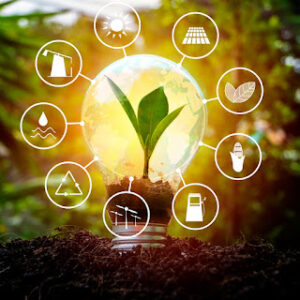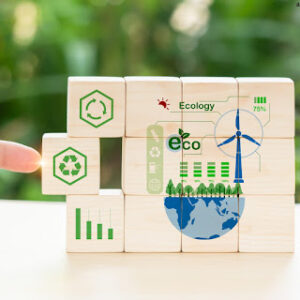
- +254708120315
- vikimsolutions@gmail.com
- Nairobi, Kenya
However, water is a scarce but indispensable resource that forms an integral part of any sustainable development. The continued conservation of water resources and its quality is a critical consideration that is pivotal in a sustainable utilization of water resources and ecosystems. This paper takes a look at the following aspects of sustainable water management practices: their significance or general conceptual meaning, potential impediments, and possible remedies.
Sustainable water management is one of the most crucial areas in development as water as a resource is scarce and it is complete when there is effective management of this resource.
Water management and preservation is important for various reasons. It provides the population with health and social services that include disease prevention, prevention of water borne illnesses and Water security. It also assists in dealing with another major problem, whereby water availability and quality has become a huge challenge as a result of enhanced population growth, urbanization and climate change.
Conserving water and providing it sustainably help in tilting the balance towards a healthier ecosystem and finding ways to protect all forms of life. They also contribute to economic development that embraces industries and agricultural production as they offer water security as well as minimize the occurrences of water conflicts and eventually lead to better coping mechanisms in cases of impacts from climate change.
Water management means that there is low wastage of water while ensuring proper utilization of water in any given project. It includes measures such as:
– Heating systems: Identifying and solving problems in water supply systems such as leaks.
– Some of these measures include using low-flow shower heads, taps, and other devices and appliances that help reduce water consumption.
– Slow water application rate, use efficient methods, and techniques such as drip irrigation is equipped.
– Promoting conservation and reducing wastage of the water supply through developing informal learning policies.
IWRM literally means integrated water resources management which is a broad and systemic approach of managing water in a sustainable manner. It engulfs the social, economical and environmental aspect as well into account for the management of Water. Key components of IWRM include:
– This is mainly responding to the various concerns of the stakeholders by involving them in the decision making processes of the organization.
– Managing the distribution of water.
– Protecting water quality.
– Ensuring that optimum and sustainable level of water use is implemented.
This refers to the act of collecting and channeling water during the rainy season for purposes of use later on depending on the need to be met. It can vary from as simple as harvesting rain water for domestic use, for instance for washing clothes and floor, gardening to the complex one whereby large quantities of water are harvested for use in agriculture and industries. Benefits of rainwater harvesting include:
– The negative impacts on the availability of water through GW and SW resources have been a concern.
– Reduction of and prevention of soil erosion, particularly by all the usual storm water run-off and flooding activities.
– The optimal position in the context of the water supply: water supplied to customers at a decentralized, private source.
Wastewater treatment can therefore be described as the process of eliminating unwanted matter from the wastewater to make it fit for discharge in accordance to environmental rules . Wastewater reuse on the other hand is the use of treated wastewater for activities that do not involve human consumption or drinking such as watering of plants and factory usage and recharging of the ground water. Benefits include:
– Conserving freshwater resources.
– Water bodies are some of the most important resources that human beings rely on for various reasons, but unfortunately, they are facing serious challenges such as pollution that hampers its use in various aspects of human life.
– Water for non-potable purposes: achieving continual access to adequate water quality for necessary uses.
Scientifically based is an approach to water management, which depends the use of natural processes and ecosystems, that people create. Examples include:
– The first goal of wetland restoration is to provide water filtration and the second one is flood control.
– There is the protection of buffer zones alongside the water lines to enhance the watershed conservation.
– Best agricultural practices and the precision of the land with a consideration of timely afforestation to lessen the looming complications of soil erosion and sedimentation.
Desalination refers to the process whereby water from seas or rivers or saline water sources is treated and made to become fit for human consumption through a number of process namely reverse osmosis or evaporation. Water recycling means using water which is in a particular condition such as wastewater and then treating the water so that it can be used again. In the following list I have added new technologies which can support freshwater supplies where they are scarce, yet they are energy intensive and could pose threats to the environment when not well managed.
Promoting education/raising awareness and institutional capacity development to enhance water management are both crucial. Some of them include water conservation awareness, pollution control awareness, and awareness of the need to usher in sustainable use of water. Another outcome of the water science themes is to train water professionals and other stakeholders in efficient water management practices and tools.
Water management is a critical issue that has both economic and environmental impacts for any society based on the availability of fresh water in the region.
The scarcity of fresh water is one of the critical issues facing the world today due to population expansion, the increasing number of people moving to urban areas, and variation in climate patterns. There is therefore the need for implementation of proper sustainable water management practices with aim of proper water resource management which is a basic need.
Contamination in water sources from industrial effluent, agricultural waste and discharge and untreated sewage poses a severe danger to water and related species. Sustainable water management allows for conservation of water resources and pollution or treatment of water in case it has been polluted.
Global warming occurs by altering the capacity, quality, and levels of waters. Water management needs to improve its climate change adaptation in order to mitigate the effects such as severely reduced water availability due to prolonged dry spells, frequent and long-term floods, and rise in sea levels.
Major water crises encompass upgrades to water infrastructure and funding of sustainable water management projects for the most part of in developing countries.
Sustainable implementation of water management requires procedural efficiency associated with effective governance and institutions. The above concept of IWRM entails coordination of users and or activities and more importantly, cross-sectored intervention.
The government can always formulate policies and regulations that will define sustainable use of water. Some of the regulations may encompass water restrictions and efficiency standards, water pollution prevention, and treatment, and promotion of water recycling and reuse.
It may also be noted that measures related to investment in water infrastructure include areas such as wastewater treatment etc, which can enhance the quality of water.
New tools, new approaches, like the applications of remote sensing in water monitoring and data analysis for decision making, are all effective for better sustainable water management.
The main reason for cooperation at the international level is to find ways for solving transboundary water problems and exchanging the effective mechanisms for sustainable water utilization.
Thus, it is crucial for water resources to be available, of good quality, and to be resilient, and thus it is essential that sustainable water management practices are utilized. When societies use methods such as water use efficiency, demand management, availability and delivery, rain water management, water recycling and reusable wastewater management, water sensitive urban design and architecture, ecosystem conservation, and desalination then it helps in sustainable development and conservation of ecosystems. Issues like water deficit, water quality, climate change, access to water and sanitation infrastructure, funding, and governance, and institutional capacity mean that addressing these problems and finding sustainable ways forward will need coordinated efforts by governments, businesses, communities, and individuals. By means of policy, investment, research, and coordination on the human, national, and global level, sustainable water management can enhance water security and build a better future with water for all.




Copyright © 2024 Vikim Solutions. All rights reserved.
42 Responses
Good https://is.gd/tpjNyL
Good https://is.gd/tpjNyL
профиль с подписчиками маркетплейс аккаунтов соцсетей
услуги по продаже аккаунтов продажа аккаунтов
площадка для продажи аккаунтов маркетплейс аккаунтов
продажа аккаунтов биржа аккаунтов
маркетплейс аккаунтов соцсетей купить аккаунт
безопасная сделка аккаунтов покупка аккаунтов
Account marketplace Database of Accounts for Sale
Account Purchase Marketplace for Ready-Made Accounts
Online Account Store Find Accounts for Sale
Accounts marketplace Account Market
Account Trading Verified Accounts for Sale
Account Trading Accounts market
Buy accounts Account Selling Service
Account marketplace Account Acquisition
Secure Account Sales Database of Accounts for Sale
Account market Account Acquisition
gaming account marketplace secure account sales
secure account purchasing platform account selling platform
account marketplace online account store
account selling platform account buying platform
account store accounts market
purchase ready-made accounts account trading platform
buy account social media account marketplace
database of accounts for sale account trading service
verified accounts for sale accounts for sale
sell account https://accounts-buy.org
accounts for sale sell account
database of accounts for sale ready-made accounts for sale
find accounts for sale account sale
account exchange service secure account sales
buy and sell accounts account market
account buying platform buy pre-made account
account buying service social media account marketplace
sell accounts sell accounts
account trading platform https://accounts-market-soc.org
gaming account marketplace purchase ready-made accounts
sell accounts website for selling accounts
account trading platform account sale
sell accounts website for selling accounts
sell accounts sell account